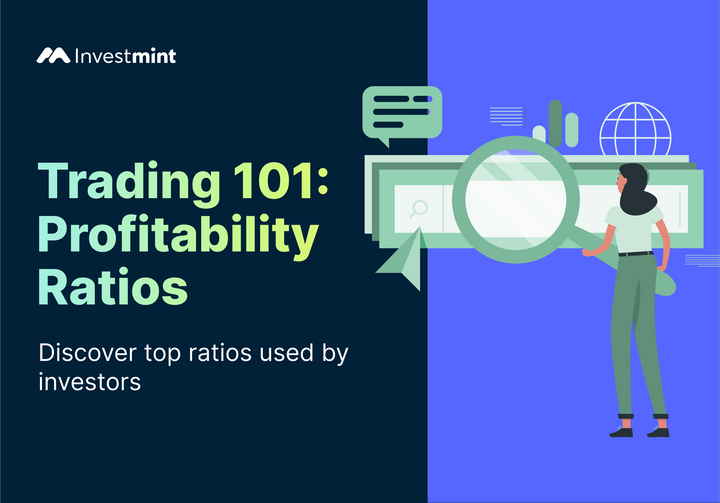Stock Market Investing Strategies Every Investor Needs to Know
Regarding stock market strategies, two primary categories dominate: active and passive. Know all about them and the various strategies here.

Rising Popularity of Stock Markets
With the advancement of technology, trading and investing in the stock markets are just some clicks and steps away. Trading mobile applications have made it convenient for millennials to start investing, and the stock market has seen a drastic rise in active trading accounts opened in the last three years.
Investors' risk appetite has increased, and as more beginners invest in the markets, it’s even more critical to have an investing strategy.
Have you ever wondered why you select to buy or sell a particular stock?
The answer to the above question will make you wonder why strategies are important.
A strategy for the stock market assists you in determining how to invest in the markets, what returns to expect, and your risk appetite and holdings period. Your investment strategy should also be aligned with the objectives and goals you want to achieve as investors.
So let's deep dive and understand the different strategies and why you should choose a particular strategy for yourself.
What Are the Common Strategies in Stock Trading?
Generally, there are numerous stock market investment strategies that you can follow. However, investing is broadly divided into active and passive strategies for most investors.
Passive strategies, as the name suggests, involve buying and holding stocks and avoiding frequent dealing in stocks.
On the other hand, active strategies involve regular trading in stocks. When you invest actively in the market, you aim to outperform any other investor and book maximum profits from each trade.
How Are Passive Investing Strategies Implemented?
An example of passive investing is buying an index fund wherein the investments are diversified and not limited to purchasing a single stock and comparing the returns. This type of investing avoids any setbacks in price and also short-term temptations.
When investing in long-term strategies, the focus is to match the broad market performance and not a particular stock. You tend to ignore the short-term ups and downs while trading for a passive strategy.
How Are Active Strategies Implemented?
When you opt for active investment strategies, the objective is to outperform the market. Picking the right stocks at the right time is the key to making your active trading strategies successful. The risk and costs associated with active strategies are high since the trade will likely work out less.
Let us look at a brief comparison between active and passive investing stock strategies in the market.
Now that we know what active and passive investment strategies are let us delve deeper into what approaches form a part of these strategies.
Active Approach Towards Investing
The active approach towards investing comprises daily or weekly investing and keeping a continuous track of investments. Some investors indulge in daily trading only for a few trades, and some continuously monitor each and every trade and square off positions accordingly.
What falls under discretionary when you are investing actively?
When actively investing in the market, you tend to monitor all the trades that are carried out continuously. Under the discretionary investing approach, there is a slightly greater chance that you trade according to the psychological sentiment of the market that you perceive.
You tend to second guess yourself almost for all the trades, so your choice of when to trade might be poor sometimes. Your psyche plays a major role in determining the profitability of the trades.
Becoming a discretionary trader requires a lot of attention and continuous monitoring of traders and market behaviour.
What happens if you become a systematic trader?
In the case of a systematic approach, since the program is driven by rules and set conditions, you may alter the trades manually.
This proves to be a boon as the system takes on the trades no matter what you feel. Since rules are made for the system, there are fewer chances that, in a set scenario, there will be any loss for you as an investor.
Passive Approach Towards Investing
There are two approaches that form a part of this trading strategy. One of them is discretionary, and one is systematic.
Let us understand the discretionary vs Systematic approach.
Discretionary trading is more suitable for you if you want to control every trading decision you make. The entry, exit target, and stop losses will be wholly decided by you.
This type of trading will require you to adapt trades according to market conditions. As discretionary traders, you will not encourage the fact that a program will do the trading based on some rules.
- Since the passive strategy of investing involves fewer trades, the research to be done for each trade and the goal of keeping up with the market trends is a tedious one.
- The benefit of using the discretionary strategy is that you can alter the trade according to the market conditions and avoid some expected losses. You can alter the portion and size of your trade if you know that certain conditions are profitable.
The systematic approach
The systematic approach is based entirely on the trading system. It does not provide the trader with an opportunity to alter the trade. If the conditions given are met, then the trade is taken.
- The system trades are automated, and the trade is executed on behalf of you by the program. The advantage of a systematic approach is that it is not influenced by any of your psychological whims.
- Even if you prefer a systematic approach to investing and let the program carry out the trades in your place, some rebalancing should be done. Rebalancing reduces the risk of overexposure to stocks and volatile assets in the long run.
No matter how passive your trading strategy is, there should be rebalancing and a routine check on stocks to diversify and manage the portfolio within the area of expertise.
Can You Use Both Strategies?
Yes, a mix of both strategies can provide good exposure and an equal opportunity to take risks and trade safely in the market.
You can be a discretionary trader who follows a system when trading for a particular market condition, or you can be a system trader who does not let the system execute the trade but carries out a different trade in the market because of your gut feeling or sentiment.
Summary
- Having an investment strategy is crucial; it aligns with your goals and risk appetite.
- Stock market strategies can be active (regular trading) or passive (buy and hold).
- Passive strategies focus on long-term market performance and diversification.
- Active strategies aim to outperform the market, often with higher risk and cost. Discretionary and systematic approaches exist in both strategies. Mixing both can provide a balanced approach.
Checkout more interesting reads on our blog





